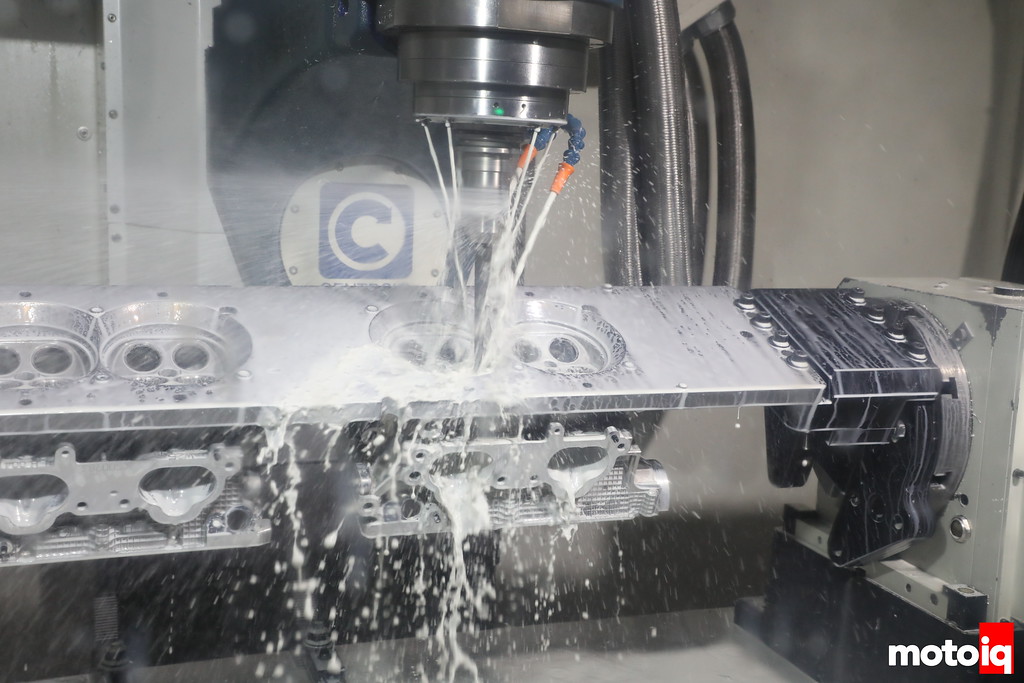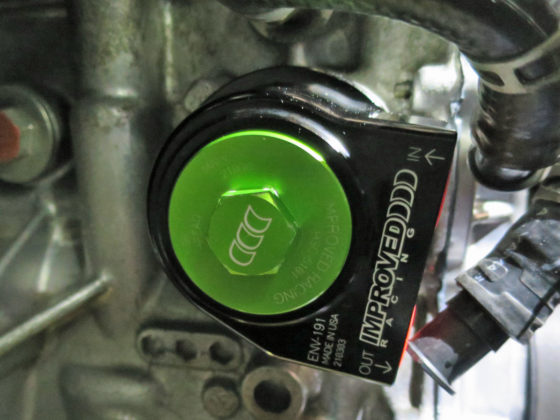
For intake valves, we used GSC +1mm 37mm oversize valves. The valves have a nail head contour, are swirl polished for good flow, and the stems are back cut for more flow and less weight. The valves are made of 21-4n stainless steel with a hardened stem tip. We cryo and WPC treated the valves for long life and less friction. We found that WPC treatment really reduces valve stem and guide wear.

The exhaust valves are GSC’s 1mm os 33mm big valves. The GSC exhaust valves are made of an alloy that can withstand more than 2000 degrees. The valves are swirl polished for good flow, have a hardened stem tip, and have chrome-plated stems for longer life and less friction. Like the intake valves, we cryo and WPC treated them for longer life and less friction.

For cam buckets, we used brand new OEM Subaru parts. They were cryo and WPC treated for long life and less friction. They were also isotropically polished by IAG for a super smooth finish.

Next, our heads received some of GSC’s manganese bronze valve guides. These guides have a lot more lubricity than the OEM iron guides for less friction and longer life. The GSC guides can be run at tighter tolerances for less oil consumption and better more consistent sealing between the valves and valve seats. The GSC guides have shaped ends for better port flow as well.

Our head started as a brand new OEM Subaru casting. IAG made use of their high-tech processing and ported them using one of their 5-axis Centroid CNC machines. The CNC machine does in maybe 20 minutes what would take a human 40 hours to do with perfect consistency and no variation between cylinders or heads. No more grumpy cylinder head guy!




16 comments
“Cast iron cannot be used with stainless steel because of its tendency to gall.”
I had to look that up, because I didn’t think that it would be a good combination of metals together for a valve guide, but didn’t know for sure.
Is the dogleg on the exhaust port the reason for the famous ‘Subaru Burble?’
No, it isn’t, it’s the unequal length exhaust and cylinder pairing.
Can’t the exhaust system account for the unequal length and cylinder pairing?
That is the exhaust system, if you do an equal length 4-1 the motor sounds more normal.
Kudos on torque-plating the head for a valve job. One step further would be to CNC-machine the whole combustion chamber. The as-cast chamber is pretty consistent but i´ve seen irregularities of up to 1,5cc on some Japanese heads.
yes, we found the same
What are the chances that IAG will add the WPC treatment as an option for their motor builds? I’m assuming that for now there would be some level of management that the custom would have to do between WPC and IAG to get the parts treated before assembly etc.
You would have to ask them, they were impressed with the WPC parts but it would add considerably to the cost of a build because of shipping and time delays.
Are the valve stems treated for wear, such as chrome plating or nitriding? If so, does the WPC process affect that treatment negatively?
The exhaust valves are chrome and the intake is nitrided. It won’t affect them.
I’m impressed the valve clearances can be computed and they are all the same.
I’ve seen a couple companies in Germany offering CNC golf ball machining to the intake valves. (@ngmotorsports on Instagram). Do you think this would make any difference to the flow based on golf ball aero principles? I haven’t seen them release and benchflow data.
I personally think it’s not worth the effort in a general sense. In some cases, you might want to thicken the boundary layer in some places to improve velocity.
nice build
too bad you miss a few important things
only real subie builders know
Like what? We are real engine builders and IAG is one of the best Subie engine builders in the country with a winning track record in actual competition.
Get real ken. Fess up.